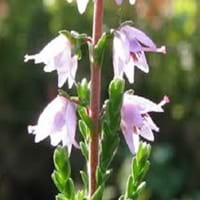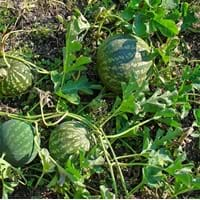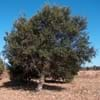Life Span
Perennial
Annual
Origin
Europe, Eastern Europe, Southern Europe
Africa
Types
Not Available
Not Available
Habitat
Forest margins, gardens, Grassland, Homesteads
Cultivated Beds, Fields, Waste areas
USDA Hardiness Zone
5-7
Not Available
Sunset Zone
2a, 2b, 3a, 3b, 4, 5, 6, 7, 8, 9, 10, 14, 15, 16, 17, 18, 19, 20, 21, 22, 23, 24
2a, 2b, 3a, 3b, 4, 5, 6, 7, 8, 9, 10, 11, 12, 13, 14, 15, 16, 17, 18, 19, 20, 21, 22, 23, 24
Habit
Prostrate/Trailing
Vining/Climbing
Flower Color
White, Purple, Pink, Light Pink, Rose, Lavender
Yellow
Flower Color Modifier
Not Available
Bicolor
Fruit Color
Brown
Yellow, Green, Yellow green, Light Green
Leaf Color in Spring
Green
Green, Light Green
Leaf Color in Summer
Green
Green
Leaf Color in Fall
Red, Green, Burgundy
Green
Leaf Color in Winter
Red, Green, Burgundy
Light Green
Leaf Shape
Grass like
Palmate
Plant Season
Spring, Fall, Winter
Summer, Fall
Sunlight
Full Sun, Partial Sun
Full Sun
Type of Soil
Loam, Sand
Loam
The pH of Soil
Acidic, Neutral
Neutral
Soil Drainage
Well drained
Well drained
Bloom Time
Early Spring, Late Winter
Indeterminate
Tolerances
Not Available
Drought
Where to Plant?
Ground
Ground
How to Plant?
Seedlings
reseeds, Seedlings
Plant Maintenance
Medium
Medium
Watering Requirements
Do Not over Water, Keep the ground moist but not water-logged, Over-head watering, Requires watering in the growing season, Water when soil is dry
Keep the ground moist but not water-logged, Over-watering can cause leaf problems or root diseases, Requires regular watering
In Summer
Lots of watering
Lots of watering
In Spring
Moderate
Moderate
In Winter
Average Water
Average Water
Soil pH
Acidic, Neutral
Neutral
Soil Type
Loam, Sand
Loam
Soil Drainage Capacity
Well drained
Well drained
Sun Exposure
Full Sun, Partial Sun
Full Sun
Pruning
Remove damaged leaves, Remove dead branches, Remove dead leaves
Remove damaged leaves, Remove dead branches, Remove dead leaves
Fertilizers
All-Purpose Liquid Fertilizer
All-Purpose Liquid Fertilizer
Pests and Diseases
Red blotch
Aphids, Bacterial fruit blotch, Cabbage looper, Cucumber mosaic, Cutworms, Red blotch
Plant Tolerance
Drought
Drought
Flower Petal Number
Not Available
Single
Foliage Texture
Fine
Coarse
Foliage Sheen
Matte
Matte
Attracts
Not Available
Not Available
Allergy
Not Available
Not Available
Aesthetic Uses
Beautification
Not Used For Aesthetic Purpose
Beauty Benefits
Not Available
Not Available
Environmental Uses
Air purification
Air purification
Medicinal Uses
Not Available
Nutrients, Vitamin C
Part of Plant Used
Whole plant
Fruits
Other Uses
Used as Ornamental plant
Used As Food
Used As Indoor Plant
Yes
No
Used As Outdoor Plant
Yes
Yes
Garden Design
Alpine, Groundcover, Rock Garden, Wall
Edible, Fruit / Fruit Tree, Herb / Vegetable, Vine
Botanical Name
ERICA carnea
CUCUMIS melo 'Lambkin'
Common Name
Winter heath
Christmas Melon, Piel de Sapo
In Hindi
अल्पाइन हीथ
Piel de sapo
In German
Alpine Heath
Piel de sapo
In French
Alpine Heath
Piel de sapo
In Spanish
Alpine Heath
Piel de sapo
In Greek
Alpine Heath
Piel de sapo
In Portuguese
Alpine Heath
Piel de sapo
In Polish
Alpine Heath
Piel de sapo
In Latin
Alpini Heath
Piel de sapo
Phylum
Not Available
Magnoliophyta
Class
Magnoliopsida
Magnoliopsida
Family
Ericaceae
Cucurbitaceae
Clade
Angiosperms, Asterids, Eudicots
Angiosperms, Eudicots, Rosids
Tribe
Ericeae
Benincaseae
Subfamily
Ericoideae
Cucurbitoideae
Number of Species
Not Available
Not Available
Season and Care of Alpine Heath and Piel de Sapo
Season and care of Alpine Heath and Piel de Sapo is important to know. While considering everything about Alpine Heath and Piel de Sapo Care, growing season is an essential factor. Alpine Heath season is Spring, Fall and Winter and Piel de Sapo season is Spring, Fall and Winter. The type of soil for Alpine Heath is Loam, Sand and for Piel de Sapo is Loam while the PH of soil for Alpine Heath is Acidic, Neutral and for Piel de Sapo is Neutral.
Alpine Heath and Piel de Sapo Physical Information
Alpine Heath and Piel de Sapo physical information is very important for comparison. Alpine Heath height is 20.30 cm and width 30.50 cm whereas Piel de Sapo height is 20.30 cm and width 150.00 cm. The color specification of Alpine Heath and Piel de Sapo are as follows:
Alpine Heath flower color: White, Purple, Pink, Light Pink, Rose and Lavender
Alpine Heath leaf color: Green
Piel de Sapo flower color: Yellow
- Piel de Sapo leaf color: Green and Light Green
Care of Alpine Heath and Piel de Sapo
Care of Alpine Heath and Piel de Sapo include pruning, fertilizers, watering etc. Alpine Heath pruning is done Remove damaged leaves, Remove dead branches and Remove dead leaves and Piel de Sapo pruning is done Remove damaged leaves, Remove dead branches and Remove dead leaves. In summer Alpine Heath needs Lots of watering and in winter, it needs Average Water. Whereas, in summer Piel de Sapo needs Lots of watering and in winter, it needs Average Water.





